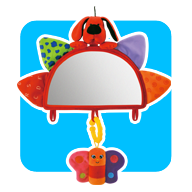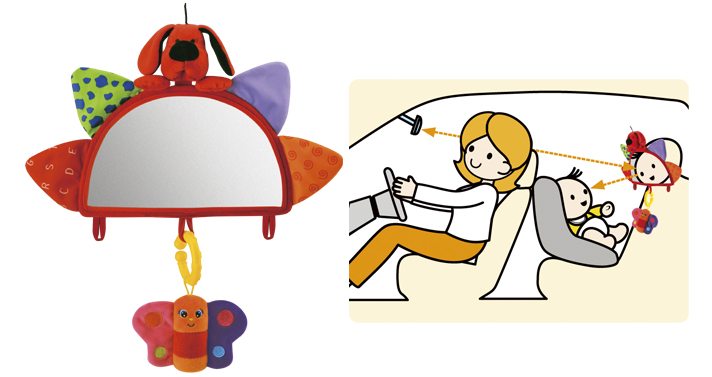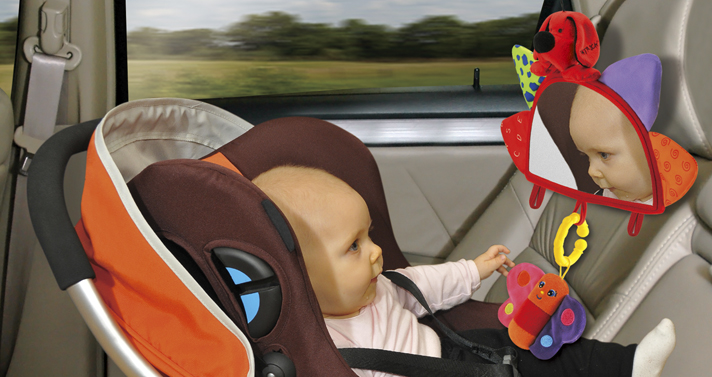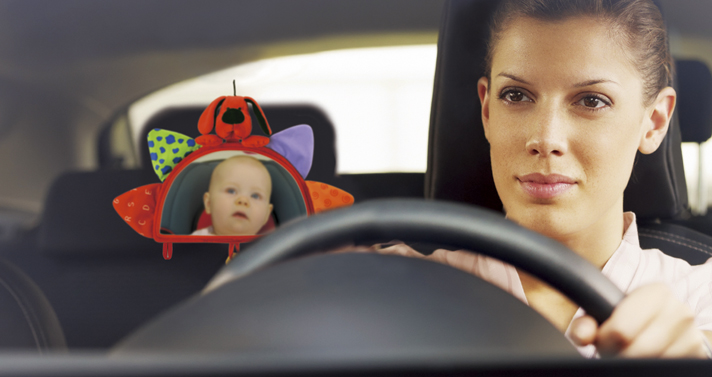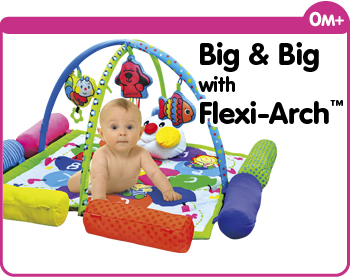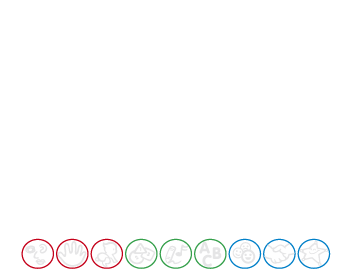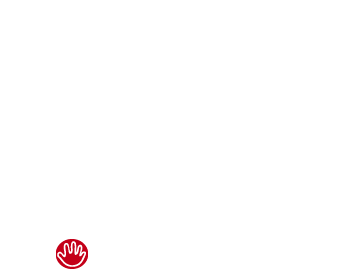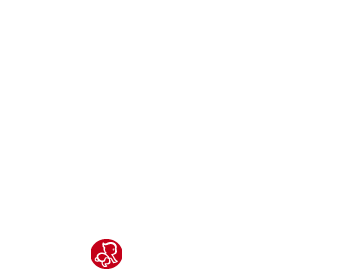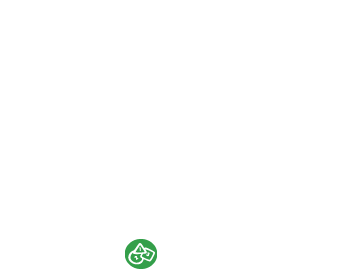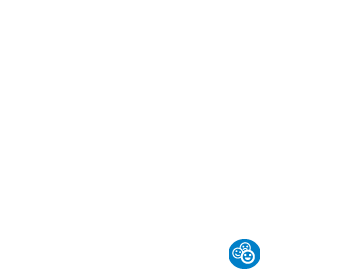45cm(W) x 45cm(H)
Small Toy: 9.5cm(H)
Mirror: 21.5cm(W) x 12.5cm(H)
Babies can have their own rear-view mirror in the car now! The detachable butterfly toy will jingle along with the ride. For reverse car seats, attach Baby’s Mirror onto the passenger seat’s headrest. Parents and babies can maintain eye contact throughout the ride!
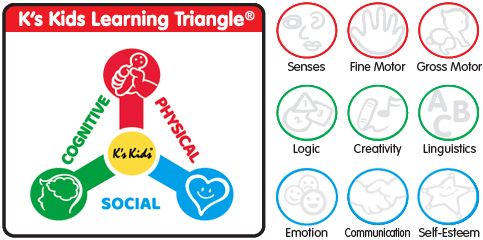
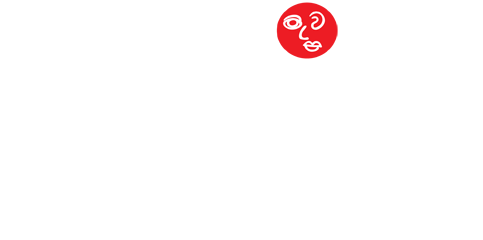
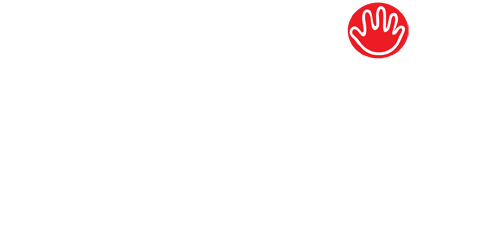




 Senses
Senses
The fundamental senses of seeing, tasting, hearing, smelling & feeling encourage a child's curiosity.
 Fine Motor Skills
Fine Motor Skills
Fine motor skills are those smaller actions between the thumb and fingers or using the toes to wriggle and feel the objects.
 Gross Motor Skills
Gross Motor Skills
Gross motor skills are larger movements involving the arm, leg, or feet muscles or the entire body.
 Logic
Logic
Logical training enables babies to make connections between pieces of information.
 Creativity
Creativity
Colors, shapes, learning how to draw, getting familiar with music and rhythm, all goes to aid the growth of a child's creativity.
 Linguistics
Linguistics
Linguistic Intelligence is the ability to use sound and language for expression and comprehension of others while a child is developing.
 Emotion
Emotion
A healthy child should be able to control and express his emotion, and interact effectively with others with mutual trust.
 Communication Skills
Communication Skills
Good communication skills lead a child to perform cooperative tasks and become productive team members.
 Self-Esteem
Self-Esteem
Self-Esteem is an overall sense of achievement a child feels from the important people around him. Task basis activities could help children to build up a stronger self-esteem with a better judgment about their own worth.
*These are recommendations made under normal circumstances. Parents can determine which activities are most suitable depending on the progress of individual children.
Objective: Visual stimulation - observing herself in the mirror (car)
Method: Fasten Baby's RVM to the passenger seat headrest so that your child can observe herself in the mirror.








Objective: Visual stimulation - observing herself in the mirror (crib)
Method: Fasten Baby's RVM to your child’s crib so that she can observe herself in the mirror.








Objective: Listening and attention training – observing your child’s reaction to sounds
Method: Shake or crinkle different parts of Baby's RVM to create sounds from different directions. Observe if your child’s gaze follows the sounds.











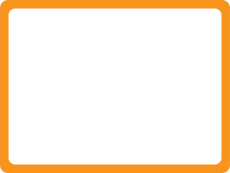












Objective: Fine and gross motor skills training - grasping
Method: The dangling butterfly moves and makes sound with the movement of the car. Encourage children to grasp the hanging butterfly.








Objective: Relaxing - making eye contact with parents
Method: You may observe your child from the front seat through Baby's RVM. Your child can also see your face through the mirror to stay relaxed and feeling secure.








Objective: Comforting baby - companionship on the road
Method: Baby's RVM trio can be strapped to any stroller to keep your child company on the road.








Objective: Cognitive training - learning facial features
Method: Use Patrick and the butterfly to teach children facial features.
























Objective: Cognitive training – pointing to facial features
Method: Name a facial feature of Patrick or the butterfly and encourage your child to point to it.
























Objective: Cognitive training - learning colors
Method: Teach children different colors.








Objective: Cognitive training – pointing to colors
Method: Name a color and encourage your child to point to it.












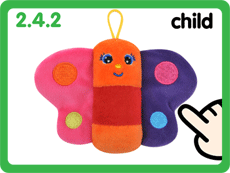











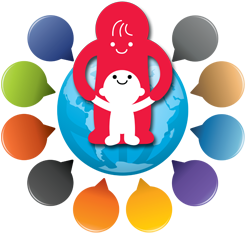
Sharing
We sincerely hope that the guidelines provided by our K's Kids Parents' Support Center will help you make the most of your K's Kids product. We hope that every child with a K's Kids product will benefit from playing and learning from it.
We also believe that every child is unique and full of creativity.
Apart from the learning methods provided here, have you or your child discovered fun and creative ways to play with your K's Kids toys? A different combination of Chain-an-inchworm? An interesting, new way to teach language using Learn to Talk™ ? Or do you simply want to share your feelings and opinions?
To share your views, please use the form below. Attach a photo or video and provide us with a short note. Whatever it is, we earnestly hope that you will share your views with us. Your views may in turn be shared with countless other parents, so that more kids can have fun with their K's Kids toys.
Please do not close this window.















































































